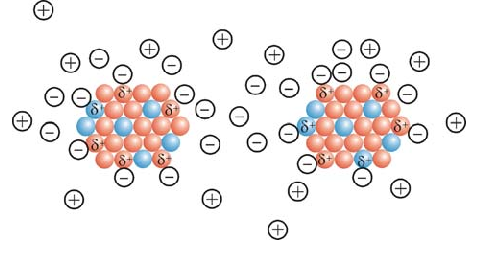(Nano-plasmonic-electronics) and nanostructures Nano structure in electrical nano-optical devices (xAs-AlxGa1) in (case 45.0 <x)
Researcher and author: Dr. ( Afshin Rashid)
Note: Nanostructures Nano structure in nano-optical devices (xAs-AlxGa1) finds (wave mode 45.0 <x) with changes in the distance between the edge of the capacitance bar and the edge of the conduction bar by changing x in three different directions of wave propagation.
Due to the lack of suitable insulation for use in transistor gates, as well as the high cost of the elements and the coating process of composite semiconductors, silicon and finally silicon-germanium alloy continue to be used as the main semiconductor. It should be noted that nanostructures Nano structure , which is easily layered with high purity, is a very suitable insulation for this purpose. Nowadays, in integrated circuits with a channel length below 50 nm, alternative oxides with higher dielectric coefficients, such as zirconium oxide ZrO2 and hafnium oxide, are obtained. He started. For example, in xAs-AlxGa1 and xN-InxGa1 the change of x to the change of the energy gap and many of the properties of these semiconductor composites lead to the energy of the structural strip.
One of the most important properties of metal nanoparticles is electronic property. Metal nanoparticles are a semiconductor with zero band gap and high electrical conductivity . As we know, each carbon atom has 1 electron that participates in chemical bonds, but in graphene, each carbon atom is connected to 9 other carbon atoms in a two-dimensional space. The remaining single atoms form a foot orbital at the top and bottom of the graphene plate, and these orbitals form carbon-carbon double bonds. The electronic property is imposed on graphene by (bonded orbital) and ( anti-bonded) double bonds. Graphene shows very high electron mobility at ambient temperature.
The optical strength of metal nanoparticles is 22 N m breaking resistance and its yang coefficient is Tpa 4. Despite its high hardness and strength, it is very light and its density is in the range (1.77 ml / mg). (Optical) properties of metal nanoparticle monolayer membranes are measured by AFM technique.
Nanostructures Nano structure in nano-optical devices (xAs-AlxGa1) finds (wave mode 45.0 <x) with changes in the distance between the edge of the capacitance bar and the edge of the conduction bar by changing x in three different directions of wave propagation.
Researcher and author: Dr. ( Afshin Rashid)
PhD in Nano-Microelectronics






